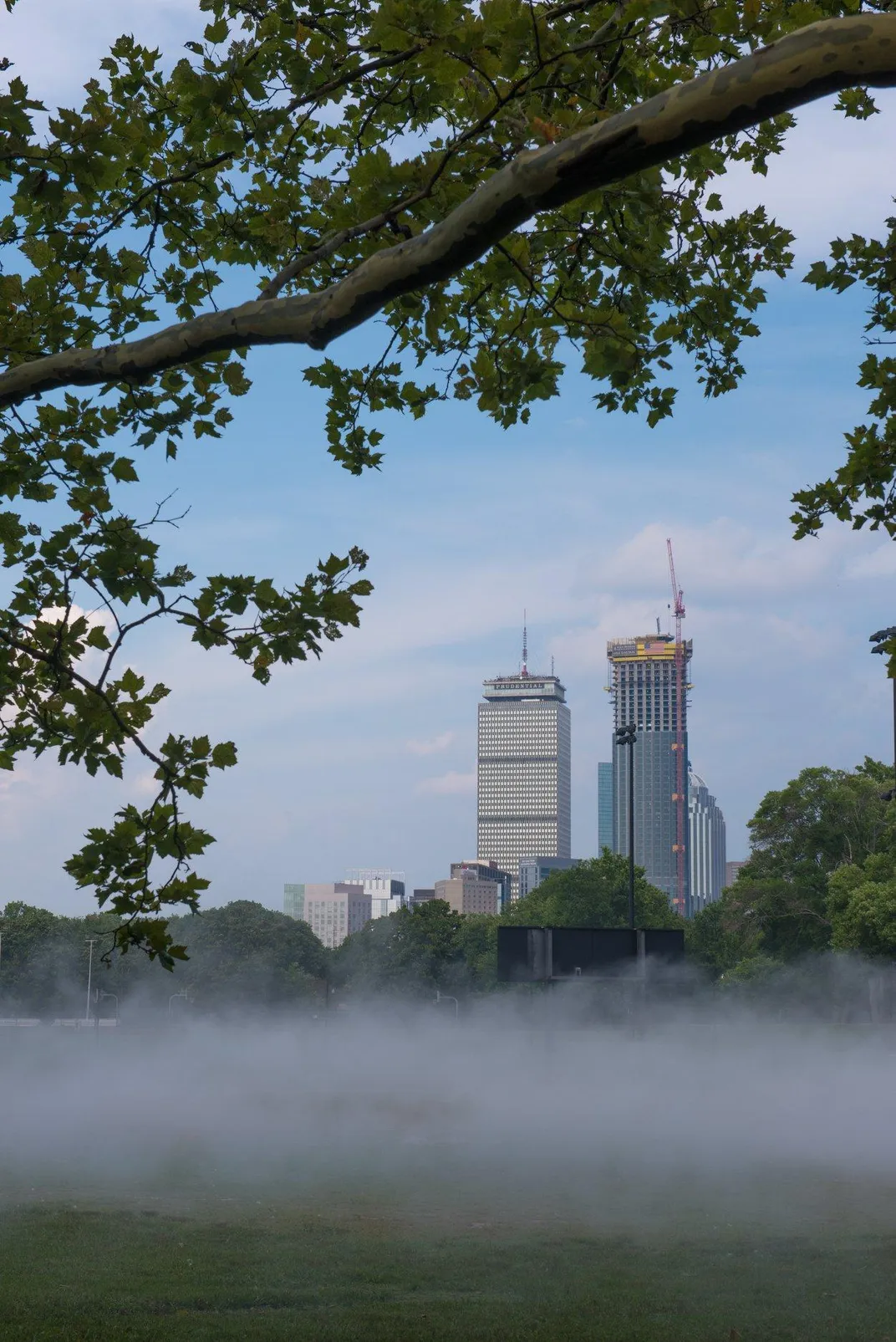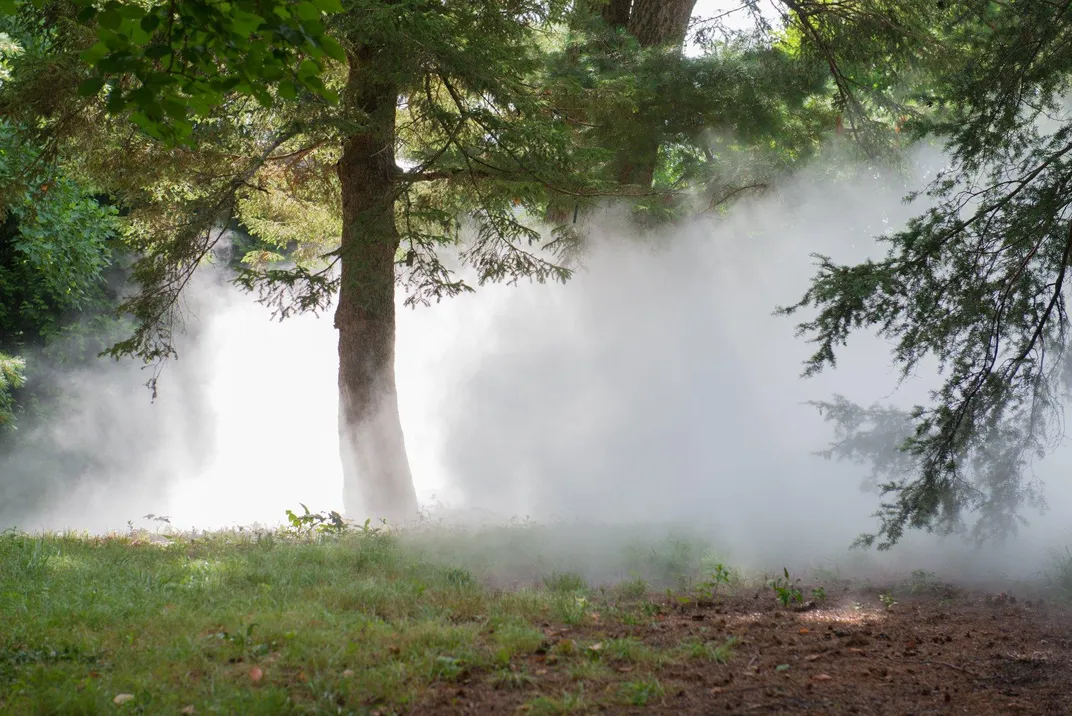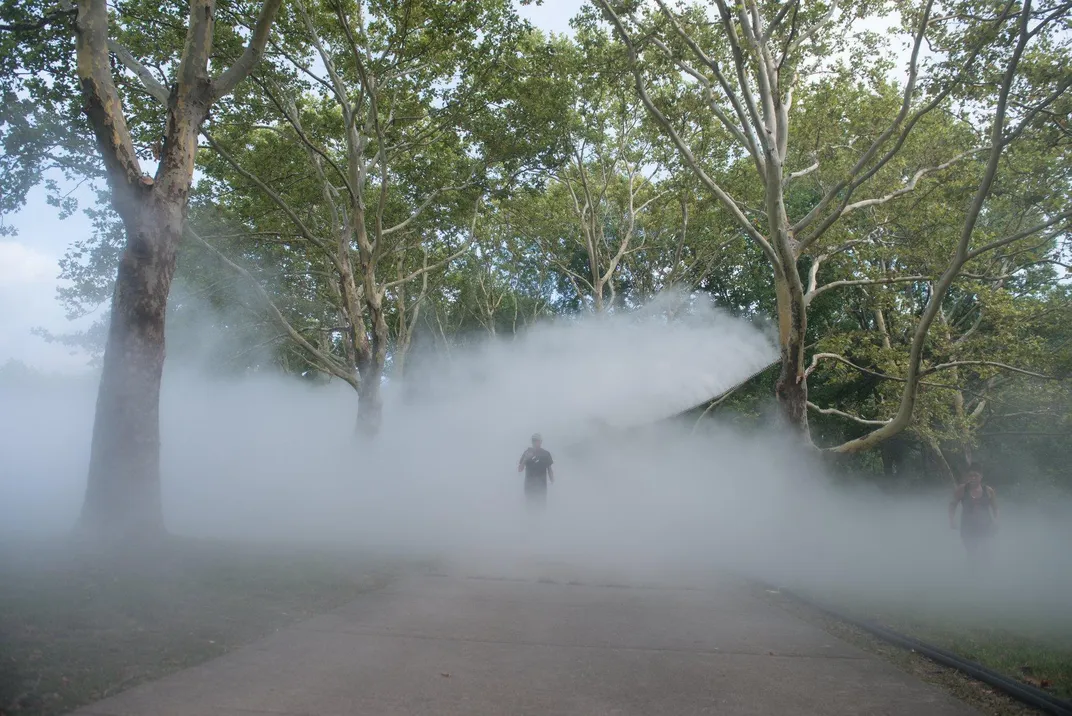Fog Sculptures Are Enshrouding Boston’s Historic Parks
Artist Fujiko Nakaya brings five fog installations to life to mark the Emerald Necklace Conservancy’s 20th anniversary
People have made sculptures out of all sorts of materials—everything from wine corks to chocolate. But a new display at Boston’s Emerald Necklace Conservancy uses something more ephemeral: fog. Andrea Shea at WBUR reports that Japanese artist Fujiko Nakaya’s famed fog sculptures have come to Boston, with five works installed in the conservancy’s parks.
To craft these transient works, Nakaya, the world’s first fog sculpture artist, arranges small stainless-steel nozzles on trees and other natural elements. Every hour on the hour, the nozzles are programmed to emit a fine spray of water droplets just 17 microns in size. This creates the fog. The artwork doesn’t form into “The Thinker” or any recognizable shape, if that’s what you’re thinking. Instead, Nakaya carefully choreographs them to waft through the air or roll down hills, across bodies of waters or through trees.
The new exhibition, called Fog x FLO: Fujiko Nakaya on the Emerald Necklace, places the sculptures in the Bay Fens, Olmsted Park, Jamaica Pond Park, Arnold Arboretum, and Franklin Park. Legendary landscape architect Frederick Law Olmstead was hired by the city of Boston to build the park system in the 1870s. By the time Olmstead wrapped up in 1895, the project spanned parks and parkway. But by the early 1900s, the sprawling public land began to suffer from neglect. According to Boston Magazine’s Madeline Bilis, it would take until the second half of the century for restoration efforts to revive the parklands. In 1998, the “Emerald Necklace Conservancy” was formally established to maintain the 1,100-acre heritage space.
Shea of WBUR reports that the conservancy members asked contemporary art curator Jen Mergel for suggestions to help them mark the conservancy’s 20th anniversary. Mergel’s mind immediately went to Nakaya. While her name may not be as well known in the States as other environmental artists like Andy Goldsworthy or light sculptor James Turrell, Nakaya has created more than 80 fog installations in 16 countries during the course of her 50-year career. “[S]he's been doing something that has been consistent, it has been timeless, and right now it is timely in terms of climate responsive art,” as Mergel tells Shea.
Born in Sapporo in 1933, Nakaya started her career as a painter, studying in Japan, Europe and the United States. But her artistry took a turn when she began to think seriously about western sculpture and its reputation for permanence. While ancient Greek and Roman sculptures made of marble have become something of a symbol for longevity, Nakaya was interested in exploring sculpture from a Buddhist point of view. “It's the Western concept of solid and eternal,” Nakaya says, “but in the Buddhist thinking it’s always that nature responds to you according to its rules.”
Nakaya became a member of E.A.T. (Experiments in Art and Technology), a movement of artists and engineers established in the 1960s and began working with U.S. engineer Thomas Mee, who had developed techniques for creating artificial fog to help protect orchards from frost. In 1970, she debuted her impermanent sculpture technique by flooding the Pepsi Pavilion at the Osaka Exposition with fog. Since then, Nakaya (who, incidentally, is the daughter of physicist and glaciologist Ukichiro Nakaya, whose claim to fame is inventing the first artificial snowflakes) has gone on to develop dozens of fog sculptures, both permanent and temporary, around the world, including "Fog Bridge #72494" at the San Francisco Exploratorium, Fog Sculpture #08025: "(F.O.G.)" at the Guggenheim Museum in Bilbao, Spain, and Fog Sculpture #94925: "Foggy Wake in a Desert: An Ecosphere" at the Sculpture Garden, Australian National Gallery in Canberra.
Fog x FLO: Fujiko Nakaya on the Emerald Necklace will be on view from dawn till dusk until October 31, which means there's still plenty of time to go see the works before they waft away for good.
Correction, August 15, 2018: An earlier version of this piece misspelled curator Jen Mergel's name. We regret the error.


